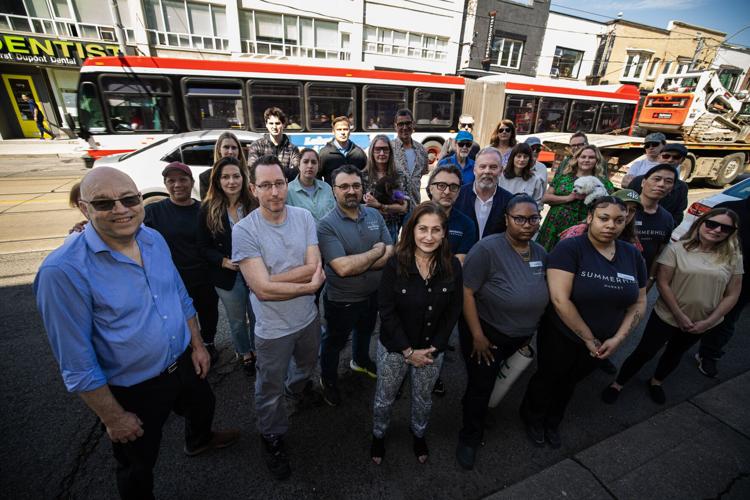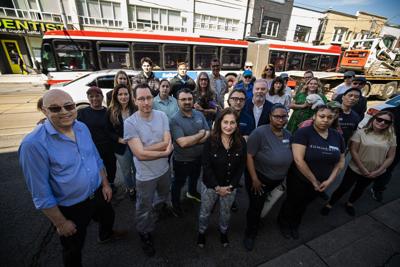Bathurst Street is my home. I live here and run a family-owned business that is connected to this community. During the peak of the pandemic, I made the difficult decision to close the laundromat that had operated here for 65 years. In its place, we opened Minerva Cannabis.
Opening a cannabis store was never the family plan, but when I told my grandfather IÔÇÖd be working in partnership with the government, he approved. He was 86 when we began construction and made his way down every day from North York ÔÇö first to arrive, last to leave. That memory lives on with me, one more story from the block.
The shops that line this corridor are more than just storefronts, theyÔÇÖre gathering spaces ÔÇö owned and operated by people who call Bathurst home. Many of us live just steps away from our businesses. Since the pandemic, this stretch has been revived. Boarded-up windows once defined the street, but now, thereÔÇÖs a vibrancy and rhythm.
Today, that hard-fought resurgence is under threat. The RapidTO proposal for Bathurst implements 24/7 dedicated transit lanes ÔÇö initially from Eglinton Ave. W. to Lake Shore Blvd. W., but adapted by city staff this week from Bloor St. W. to Lake Shore Blvd. W. It may appear the city is backing down somewhat, but this is still only a recommendation that city councillors need to vote on.

The TTC and city’s plans for proposed priority bus lanes on Bathurst Street.┬á
TTC and City of ╬┌Ð╗┤½├¢The aim of the plan is to ease bus delays and improve transit reliability. The original plan calls for eliminating 480 parking spots along the way. The plan is being fast-tracked to meet FIFA 2026 deadlines and in doing so, risks flattening the complex needs of the neighbourhoods into a one-size-fits-all solution.
No parking. No stopping. No loading zones. No access.
Public consultation has been minimal ÔÇö just two in-person meetings, two virtual sessions and a one-month online survey. ThatÔÇÖs not collaboration; itÔÇÖs box-checking. The result has been a manufactured conflict: transit riders versus small businesses, drivers versus cyclists. Lost in this surface-level debate are the lived realities of the people most affected ÔÇö residents, shopkeepers, seniors, and parents.
To date, over 3,000 people have signed petitions opposing the current plan. Walking door to door, IÔÇÖve been struck by how many of my neighbours hadnÔÇÖt even heard about the proposed changes. The cityÔÇÖs outreach campaign ÔÇö 72,000 flyers across four wards ÔÇö barely scratches the surface, reaching only about 15 per cent of affected residents.
Only after public consultation had ended did our councillor, Dianne Saxe, begin meeting with concerned residents and businesses. She later proposed compromises, but they sparked new concerns in other parts of the ward ÔÇö highlighting the rushed and reactive nature of this entire process.
This pattern is becoming all too familiar in ╬┌Ð╗┤½├¢: top-down planning with little transparency, accountability and even less public trust.
In the meantime, businesses along this strip have faced online harassment and boycott campaigns. On Reddit, members of the cycling community have labelled us ÔÇ£anti-transitÔÇØ or ÔÇ£anti-bikeÔÇØ ÔÇö simply for asking for meaningful consultation, data-driven planning and workable solutions.
The TTC has painted this issue in black-and-white terms, but itÔÇÖs never been that simple. No viable alternatives have been presented. One compromise weÔÇÖve suggested: introduce HOV lanes and extend rush hour periods by 30 minutes on either end ÔÇö preserving parking during off-peak hours while improving traffic flow. Data collection could then guide future adjustments.
A permanent, sweeping overhaul of infrastructure on an accelerated timeline for FIFA is not responsible planning. At minimum, the city owes us evidence ÔÇö clear, measurable data that shows these changes will deliver without dismantling the communities they affect.
This is about more than metrics. ItÔÇÖs about people.
ItÔÇÖs about seniors visiting the medical facilities.
Parents dropping their kids at school or daycare.
Families attending funerals, weddings, or services at places of worship.
Residents with accessibility needs.
Shop owners ÔÇö like me ÔÇö who are trying to keep the lights on.
The TTC talks about improved service times, but that promise falls flat if buses bunch, gap, or stall due to underlying reliability issues. Dedicated lanes donÔÇÖt address scheduling or operational flaws and infrastructure alone doesnÔÇÖt solve systemic problems.
On Wednesday, on behalf of our community. I encourage others who share these concerns to join me. Sign the petition. Raise your voice. Tell City Hall: Stop making decisions for us and start making decisions with us.
We belong in the room where the future of our neighbourhood is being decided.
Error! Sorry, there was an error processing your request.
There was a problem with the recaptcha. Please try again.
You may unsubscribe at any time. By signing up, you agree to our and . This site is protected by reCAPTCHA and the Google and apply.
Want more of the latest from us? Sign up for more at our newsletter page.






























To join the conversation set a first and last name in your user profile.
Sign in or register for free to join the Conversation